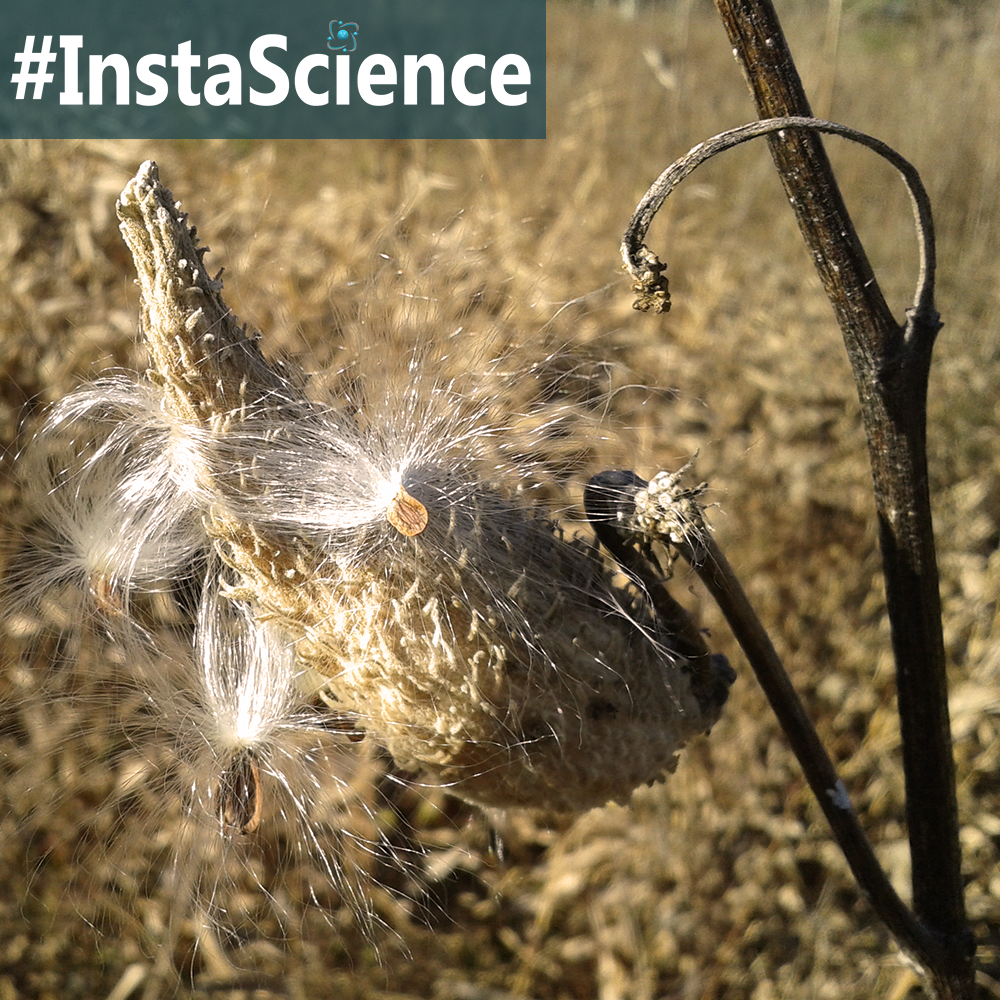
I am a huge fan of Monarch butterflies! By default, I am also a fan of the plants that feed the monarch caterpillars – the milkweed. This time of year, the milkweeds in the field by your house are starting to die off and release their seeds, like the one in the picture, which makes them super easy to spot.
The Milkweed is a native plant to North America with over 100 different varieties. Inside the milkweed, a milky white sap that contains a mild poison can be found. It’s bitter taste usually prevents animals and insects from eating the leaves. The exception to this is the Monarch caterpillar, which thrives on milkweed leaves. This diet causes the caterpillars to collect these mild toxins in their body, making them a less than tasty treat for a waiting predator.
Milkweeds produce purple or pink flowers arranged in drooping clusters. These flowers bloom from June to August, producing nectar that feeds butterflies, moths, and bees. And these insects return the favor by pollinating the plant. The end result is a hairy seed that floats off easily in the wind when the pod dries out and splits in late fall.
Fun Fact – Milkweed plants can also spread through rhizomatic activity, meaning that they can grow a new plant from their vast root network!
More Homeschool Science Helps
- This time last year, we shared about Monarchs.
- Don’t miss episode 16 of my podcast where I shared 3 science-packed ideas for using up those candy corns.
 Sign up below to receive weekly tips & tools for homeschool science and we'll send you a FREE copy of
Sign up below to receive weekly tips & tools for homeschool science and we'll send you a FREE copy of